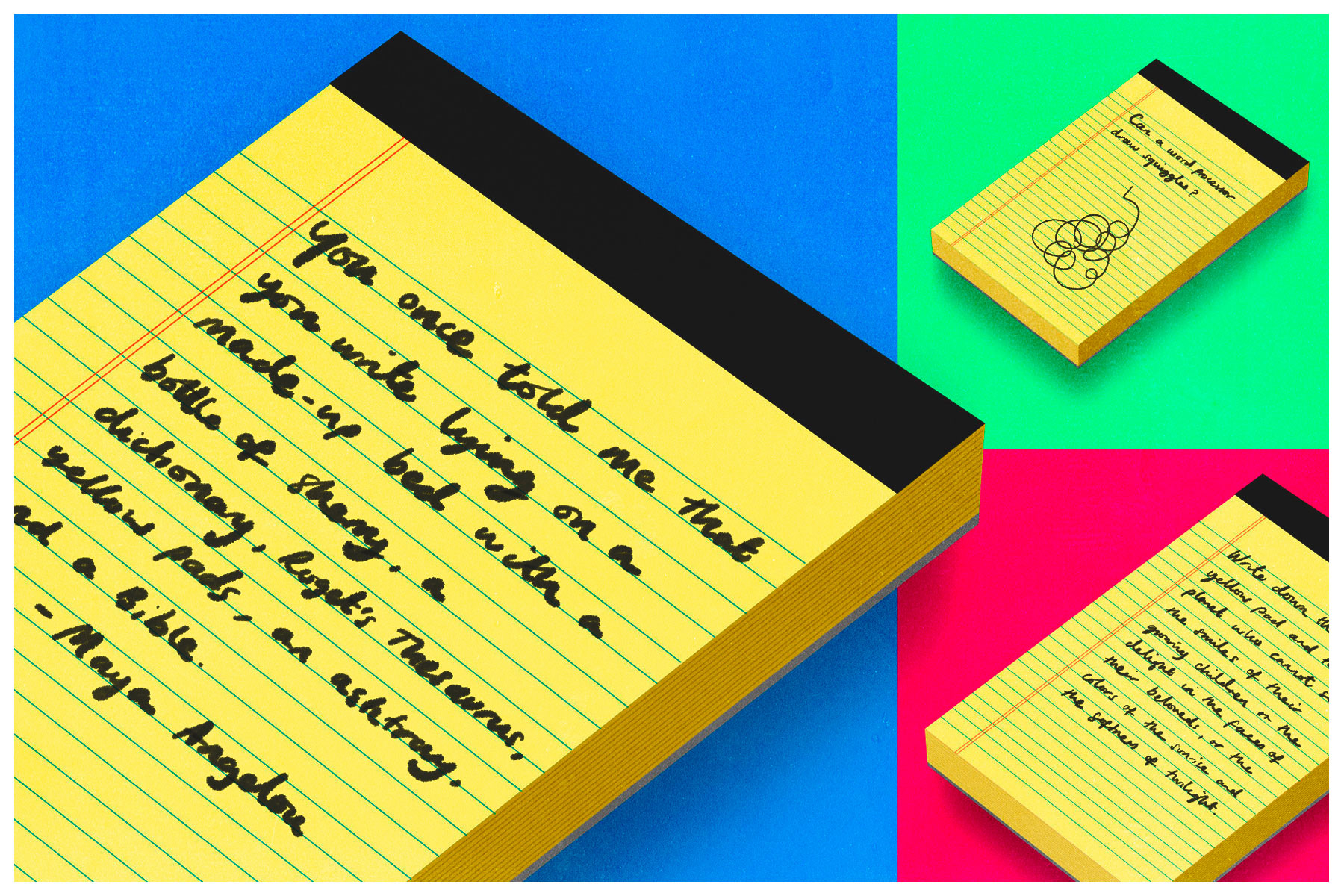Obama’s secret writing weapon: what is it about the yellow legal pad?

Perhaps not surprisingly, the first part of Barack Obama’s political memoirs, A Promised Land, has become the fastest-selling presidential memoir of all time. But what is unexpected about the 760-page book is that the former president wrote them by hand.
It’s one of the first of many revelations in A Promised Land, when Obama regards his memoir: "by the time I sat down with a pen and yellow pad (I still like writing things out in longhand, finding that a computer gives even my roughest drafts too smooth a gloss and lends half-baked thoughts the mask of tidiness), I had a clear outline of a book in my head."
It wasn't a process just undertaken for A Promised Land, either: Obama has kept journals and written short stories since his teens. In January 2017, his final weeks in office, he invited Dave Eggers, Colson Whitehead, Zadie Smith, Junot Diaz and Barbara Kingsolver for lunch and talked about writing, including that he preferred to do first drafts on yellow pads. Speeches - such as the history-making keynote he gave at the 2004 Democratic National Convention.
In the UK, we don’t really have such a thing as a yellow legal pad. Pre-punched lined paper doesn’t have the same allure, and the associations with Moleskine notebooks, used by artists and writers alike (Vincent Van Gogh, Bruce Chatwin and Pablo Picasso among them) come with a premium price tag. Even so, the yellow legal pad has earned its place in pop culture thanks to appearing in countless film and TV court room scenes.
'I have written 31 books, essays, plays and lyrics for songs – all on yellow pads'
Off-screen, they have long been the starting blocks of many a great book. Maya Angelou loved them, saying "I have written 31 books, essays, plays and lyrics for songs – all on yellow pads." In fact, she’s said a lot about the things, among them: "I see a yellow pad, and my knees get weak, and I salivate." When American journalist George Plimpton interviewed her for The Paris Review, his opening gambits was: "You once told me that you write lying on a made-up bed with a bottle of sherry, a dictionary, Roget’s Thesaurus, yellow pads, an ashtray, and a Bible."
Susan Sontag scribbled on hers in felt tip pen or pencil; Truman Capote wrote his first two drafts by hand before switching to typewriter and Elmore Leonard ordered his yellow pads in especially: "They’re eight and a half by eleven, buff—a nice yellowish color—and unlined."
Why yellow? Nobody really knows. The history of the pads are storied: Tom Holley, an entrepreneurial 24-year-old paper mill worker, saw a business opportunity in the scraps left over when sheets of paper were cut to size. He bound these into notepads, and sold them cheaply to reflect the low costs involved. These were so successful he set up his own business, Ampad. This was in 1888, and nobody knows when the yellow dye came in.
'In the age of floppy disks, the yellow legal pad holds its own'
The main part of Ampad’s legacy on today’s pad is the 1.25-inch margin on the left-hand side, which Holley added in the early 1900s for a judge who wanted a space to comment on his notes. That, and the fact that the yellow legal pad remains one of the best value sources of paper around, even now. They’re also satisfying to write on: one contributor on Quora explained the appeal "if you wanted paper that was that wasn't dropping loose sheets all over the place while you were interviewing people in the alley or writing your novel in the park, yellow legal pads were the way to go. Furthermore, you didn't have the three holes on the left-hand side to work around – more writing space!"
And the colour must have something to do with creativity. In America, sales of yellow pads can outnumber those of white ones by a ratio of two to one. The yellow pad also seems resistant to technological advancement, too. Much as Obama eschewed a laptop for writing his novel, so in 1986 did the New York Times proclaim: "In the age of floppy disks, the yellow legal pad holds its own" after manufacturing rates of the pads were up by 10-15% across the country.
Nearly 35 years on, and while conversations among writers on Twitter may rage over the benefits of using Word vs Scrivenver vs Google Docs, there remain some sticklers for whom working via longhand, with pen and ink, is the only way to go. After all, if it’s good enough for Obama to write a bestseller, it’s probably good enough for us, too.